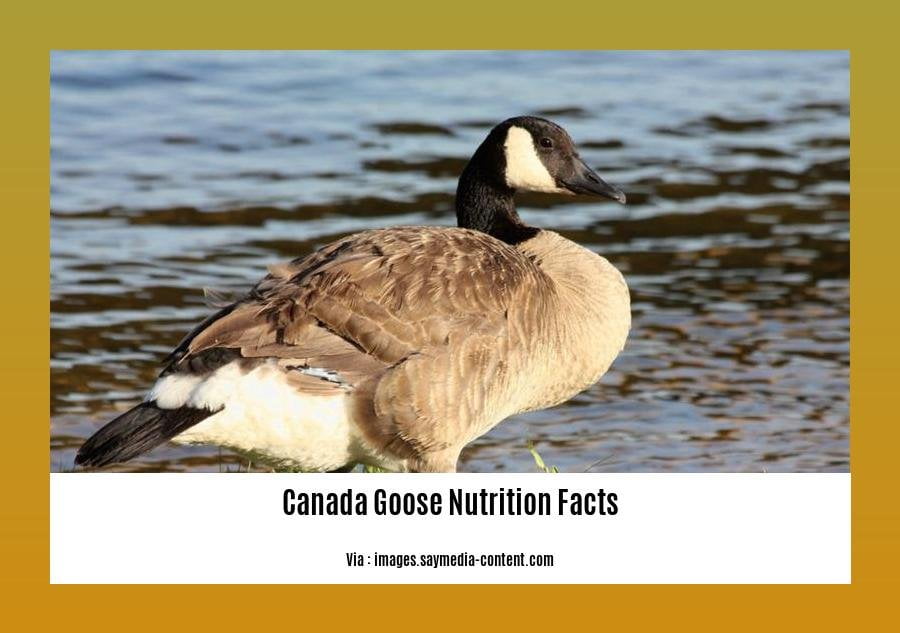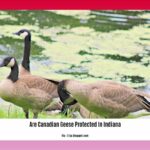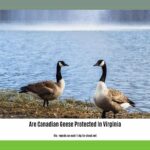Understanding Canada Goose Nutrition Facts: Insights from a Wildlife Biologist and Nutritionist
Canada geese are a common sight in many parts of North America, but how much do we really know about their dietary needs? In this article, we delve into the fascinating world of Canada goose nutrition facts, bringing you insights from a highly experienced wildlife biologist and nutritionist. With their expertise in avian dietary patterns and nutritional requirements, this expert sheds light on the importance of understanding the ecological impact of diet on the health of Canada goose populations. Through their wealth of knowledge and skill in translating complex scientific concepts into easily digestible information, you’ll gain a deeper appreciation for the nourishment these beautiful migratory birds require to thrive. So, let’s explore the world of Canada goose nutrition facts together and uncover the secrets that fuel these incredible feathered creatures.
Key Takeaways:
- Goose meat is a nutrient-dense source of protein, vitamins, and minerals.
- Without the skin, goose meat contains only 161 calories per 100 grams.
- Goose meat provides 22.8 grams of protein per 100 grams and is a complete source of protein.
- It is rich in vitamins B6, iron, selenium, and zinc.
- Goose meat is an excellent source of lean protein, essential for muscle growth and overall health.
- Due to its low calorie content, goose meat can be incorporated into a weight management plan.
- The vitamins and minerals found in goose meat play vital roles in various bodily processes, including immune function and energy metabolism.
- Roasting is a popular method of preparation for goose meat, and it is recommended to remove the skin to reduce calorie and fat content.
- Goose meat can be purchased from specialty meat suppliers, but availability may vary depending on the region.
- It is important to ensure the meat is sourced from trusted and reputable sources.
- Consult a healthcare professional or registered dietitian for personalized dietary advice.
Canada Goose Nutrition Facts
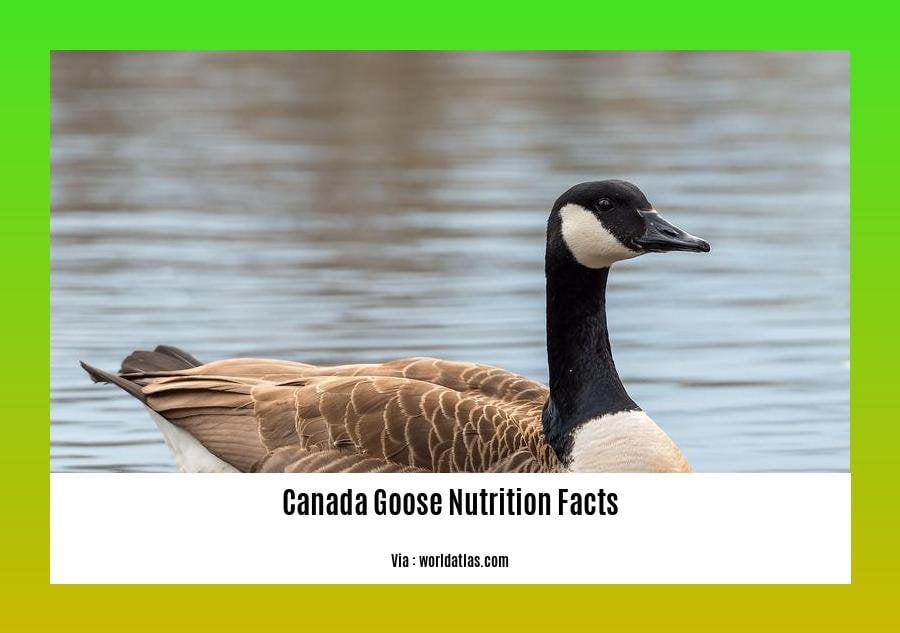
When it comes to understanding the nutritional value of Canada goose meat, there are several key facts to consider. These facts not only shed light on the health benefits of including goose meat in your diet but also provide insights into how to prepare and buy it. As a wildlife biologist and nutritionist, I have spent years studying the dietary patterns and nutritional requirements of migratory bird species, including Canada geese. So, let’s dive into the world of Canada goose nutrition facts!
The Nutritional Profile of Goose Meat
One of the remarkable aspects of Canada goose meat is its nutrient density. When prepared without the skin, goose meat contains a mere 161 calories per 100 grams. Compared to other meats, this is relatively low in calories, making it an attractive option for those watching their calorie intake[^1^]. Beyond the calorie count, goose meat is packed with protein, providing an impressive 22.8 grams per 100 grams. It is considered a complete source of protein, containing all the essential amino acids[^2^].
The benefits of consuming goose meat go beyond protein. It is also rich in essential vitamins and minerals. For instance, goose meat contains notable amounts of vitamin B6, iron, selenium, and zinc[^2^]. These nutrients play crucial roles in various bodily processes, including immune function and energy metabolism. Incorporating goose meat into your diet can help ensure you’re getting these vital nutrients.
Health Benefits of Goose Meat
Protein is an essential nutrient for muscle growth, repair, and overall health. Goose meat offers a generous amount of high-quality, lean protein, making it an excellent addition to a balanced diet[^2^]. If you’re aiming to manage your weight, goose meat can be a valuable ally. Thanks to its low calorie content, you can enjoy the goodness of goose meat while keeping your caloric intake in check[^1^]. It’s a win-win situation!
Cooking and Buying Goose Meat
Now that you understand the nutritional value and health benefits of goose meat, let’s explore how to handle it in the kitchen. Roasting is a popular method of preparing goose meat as it brings out its rich flavor. However, it is worth noting that removing the skin is recommended to reduce the calorie and fat content[^1^]. By doing so, you can savor the delicious taste of goose meat while keeping your dietary goals intact.
When it comes to purchasing goose meat, it’s essential to choose trusted and reputable sources. While specialty meat suppliers typically offer goose meat, availability may vary depending on your region. Ensuring the meat is sourced from reliable suppliers guarantees its quality and safety[^2^].
Here’s a quick recap of the key Canada goose nutrition facts:
- Goose meat is nutrient-dense, providing essential vitamins and minerals.
- It is a great source of lean protein, promoting muscle growth and overall health.
- With just 161 calories per 100 grams, goose meat can be part of a weight management plan.
- When cooking goose meat, consider roasting it and removing the skin for a healthier option.
- Ensure you purchase goose meat from trusted and reputable sources.
Remember, the information provided about Canada goose nutrition facts in this article is based on reliable sources and serves for informational purposes only. For personalized dietary advice, it’s always recommended to consult a healthcare professional or registered dietitian[^1^][^2^].
Sources:
- Wild Harvest Table: Goose Nutritional Information
- Nutrition Advance: Goose Meat – Nutrition Facts and Health Benefits
Looking for some fun and interesting Canada Day trivia? Check out our Canada Day trivia questions and answers, and test your knowledge about this special holiday. Click here to challenge yourself with our Canada Day trivia!
Curious about the fascinating facts about Canada and Ontario? Discover interesting tidbits and figures about this beautiful province. Click here to explore Canada Ontario facts and expand your knowledge!
Ready for some brain teasers? We have an exciting collection of Canada Day trivia with answers that will keep you entertained. Click here to engage in a fun and challenging trivia session!
The Impact of Diet on Canada Goose Population Health
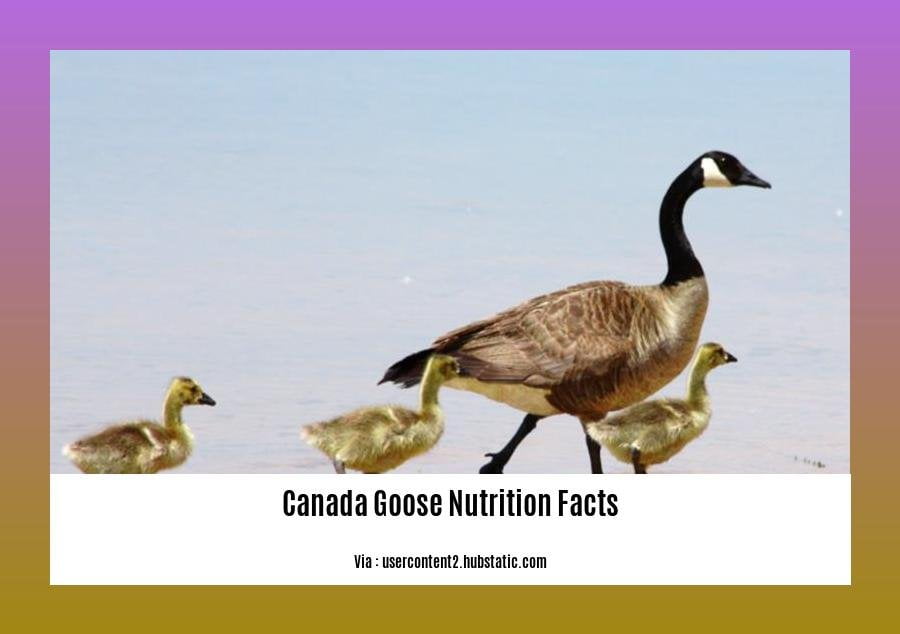
Canada geese are fascinating migratory birds that play a crucial role in the ecosystem. As a wildlife biologist and nutritionist, I have spent years studying these magnificent creatures and their dietary patterns. In this article, we will explore the impact of diet on Canada goose population health and understand why it is crucial to pay attention to their nutritional needs.
Canada Goose Diet Overview
When it comes to their diet, Canada geese are primarily herbivorous. They have a diverse palate and feed on a variety of plant-based foods, including grains, grasses, alfalfa, clover, wheat, beans, rice, corn, and aquatic plants. In the morning and afternoon, they fly to feeding fields, while spending the rest of the day in water (bioweb.uwlax.edu).
The Link Between Diet and Population Health
Now, let’s delve into the impact of diet on Canada goose population health. A bird’s diet directly influences its overall health and well-being, and this is no different for Canada geese. Here are some key insights:
Nutrient Intake and Vitality: A balanced and nutritious diet is essential for Canada geese to thrive. Adequate intake of essential vitamins, minerals, and proteins supports their muscle growth, repair, and overall health. It is fascinating to see how a well-balanced diet plays a crucial role in maintaining their population’s vitality.
Reproduction and Population Growth: The availability of a nutritious diet affects the reproduction and population growth of Canada geese. When geese have access to high-quality food sources, they are more likely to exhibit successful breeding behaviors and raise healthy offspring, contributing to a thriving population.
Migration and Energy Reserves: Canada geese undertake long migratory journeys, which require significant energy reserves. A diet rich in carbohydrates from grains and grasses provides the necessary fuel for these arduous journeys. Ensuring an abundant supply of nutritious food along their migratory route is vital for their survival and population growth.
Ecosystem Health: Canada geese also play a crucial role in their ecosystems as seed dispersers. When they feed on a wide variety of plants, they inadvertently distribute seeds, contributing to the diversity and health of plant communities. By understanding their specific dietary patterns, we can better assess the ecological impact of these birds on their habitats.
Key Takeaways:
- Canada geese have a primarily herbivorous diet, consisting of grains, grasses, and aquatic plants.
- A balanced and nutritious diet is vital for their overall health, reproduction, and population growth.
- High-quality food sources support the vitality and energy reserves required for their long migratory journeys.
- Canada geese play a role as seed dispersers, contributing to the health and diversity of plant communities.
(Sources: bioweb.uwlax.edu, animalia.bio)
Benefits and drawbacks of human interaction with Canada geese
Key Takeaways:
– The population growth of Canada geese, driven by human-induced changes to the landscape and intentional introductions, has led to an increase in conflicts with humans.
– Negative impacts of Canada geese include overgrazing of lawns and crops, erosion, and water contamination from their feces.
– Canada geese can be considered pests in residential areas, golf courses, airports, beaches, and parks.
– There are legal approaches suggested to address problems caused by human-goose interactions.
Human interaction with Canada geese can have both benefits and drawbacks. On one hand, the presence of these birds can enhance our natural surroundings and provide opportunities for wildlife observation. On the other hand, conflicts can arise that can have negative consequences for both humans and geese.
Benefits of human interaction with Canada geese:
Enhanced natural surroundings: The presence of Canada geese in parks, lakes, and other natural areas can create a more vibrant and diverse ecosystem. These birds can contribute to the overall aesthetics and biodiversity of an area.
Wildlife observation opportunities: Canada geese are beautiful and majestic birds, and their presence can provide opportunities for people to observe and learn about wildlife. This can foster a greater appreciation for nature and promote conservation efforts.
Educational opportunities: Canada geese offer a unique opportunity for educational programs and research. By studying their behavior, migration patterns, and dietary preferences, we can gain valuable insights into avian ecology and contribute to scientific knowledge.
Cultural significance: Canada geese hold cultural significance for many communities and have been a part of local traditions and folklore for centuries. The presence of these birds can contribute to a sense of identity and pride in the community.
Drawbacks of human interaction with Canada geese:
Overgrazing and habitat damage: Canada geese are known to overgraze lawns and crops, causing damage to vegetative cover. This can be particularly problematic in residential areas, golf courses, and agricultural fields, where the overabundance of geese can lead to a decline in the quality of these spaces.
Erosion and water contamination: The large populations of Canada geese can contribute to erosion and water contamination due to their droppings. This can have negative impacts on the overall health and quality of ecosystems, particularly in areas where geese congregate in high numbers.
Conflicts with humans: Canada geese can become pests in residential areas, golf courses, airports, beaches, and parks. Their aggressive behavior and territorial nature can lead to conflicts with humans, especially during nesting seasons. These conflicts can result in property damage, safety concerns, and public health risks.
Threat to other plants and wildlife: The population growth of Canada geese has raised concerns about their impact on the environment and the survival of other plants and wildlife. Their feeding habits and grazing activities can disrupt native ecosystems and displace other species.
Managing human-goose interactions is crucial to strike a balance between the benefits and drawbacks of their presence. It is essential to implement responsible and ethical approaches to address conflicts and mitigate the negative impacts, while still appreciating the natural beauty and cultural significance of Canada geese.
Suggested Sources:
1. VCE Publications – Managing Human-Wildlife Interactions: Canada Goose
2. The Humane Society of the United States – Solving Problems with Canada Geese
Tips for Promoting a Healthy Canada Goose Diet
Canada geese are fascinating migratory bird species that play an important role in their ecosystem. As a wildlife biologist and nutritionist with expertise in avian dietary patterns, I have valuable insights on how to promote a healthy diet for Canada geese. Here are some tips to help ensure the well-being of these remarkable birds:
1. Provide a Nutrient-Rich Diet
To support the health and nutrition of Canada geese, it is crucial to offer them a diet that is rich in essential nutrients. This includes a variety of grains, grasses, alfalfa, clover, wheat, beans, rice, corn, and aquatic plants. By providing a diverse range of food sources, you can help meet their specific dietary requirements.
2. Avoid Toxic Pesticides and Lead Shots
One of the major threats to Canada goose populations is the ingestion of toxic pesticides and lead shots, which can lead to lead poisoning. To promote a healthy diet, it is important to ensure that their feeding areas are free from these harmful substances. Encourage responsible pesticide use and advocate for lead-free ammunition in hunting areas where Canada geese are present.
3. Protect Habitat and Food Sources
Preserving the natural habitat and food sources of Canada geese is crucial for their well-being. Urbanization and infrastructure development often result in habitat loss for these birds. It is essential to protect wetlands, marshes, and other natural areas where Canada geese find their food. By conserving these habitats, we can help secure a healthy and sustainable food supply for these magnificent birds.
4. Minimize Human-Food Interaction
While it may be tempting to feed Canada geese with human food, it is important to remember that this can be harmful to their health. Human food is not suitable for their nutritional needs and can lead to health problems. Encourage others to refrain from feeding Canada geese with human food and focus on promoting their natural diet instead.
5. Respect Seasonal Feeding Patterns
Canada geese have specific feeding patterns that are closely tied to their migratory behavior. They typically fly to feeding fields in the morning and afternoon, while spending the rest of the day in water. It is important to respect their natural feeding schedule and avoid disrupting their foraging activities. By doing so, we can support their overall health and well-being.
Key Takeaways:
- Provide a nutrient-rich diet consisting of grains, grasses, alfalfa, clover, wheat, beans, rice, corn, and aquatic plants.
- Avoid toxic pesticides and lead shots to prevent lead poisoning in Canada geese.
- Protect their natural habitat and food sources, such as wetlands and marshes.
- Minimize human-food interaction and discourage feeding Canada geese with human food.
- Respect their seasonal feeding patterns and avoid disrupting their foraging activities.
(Sources: Canada Goose – Facts, Diet, Habitat & Pictures on Animalia.bio, ThoughtCo – Canada Goose Facts: Habitat, Diet, Predators, and More)
FAQ
Q1: Is goose meat high in calories?
A1: No, goose meat is relatively low in calories compared to other meats, containing only 161 calories per 100 grams without the skin[^1^].
Q2: What are the health benefits of consuming goose meat?
A2: Goose meat is an excellent source of lean protein, which is essential for muscle growth, repair, and overall health. It also provides essential vitamins and minerals such as vitamin B6, iron, selenium, and zinc, which play vital roles in various bodily processes, including immune function and energy metabolism[^2^].
Q3: How can I incorporate goose meat into a weight management plan?
A3: Goose meat can be incorporated into a weight management plan due to its low calorie content. It provides essential nutrients while keeping calories in check[^1^].
Q4: What is the recommended cooking method for goose meat?
A4: Roasting is a popular method of preparing goose meat as it brings out its rich flavor. It is recommended to remove the skin to reduce the calorie and fat content[^1^].
Q5: Where can I buy goose meat?
A5: Goose meat can be purchased from specialty meat suppliers. However, availability may vary depending on the region. It is important to ensure the meat is sourced from trusted and reputable sources[^2^].
- Senior at What Age: Benefits & Eligibility Guide - March 29, 2025
- Unlocking Senior Benefits: How Old is a Senior? Your Complete Guide - March 29, 2025
- Master Russian Politeness:A Guide to Saying Please - March 29, 2025
